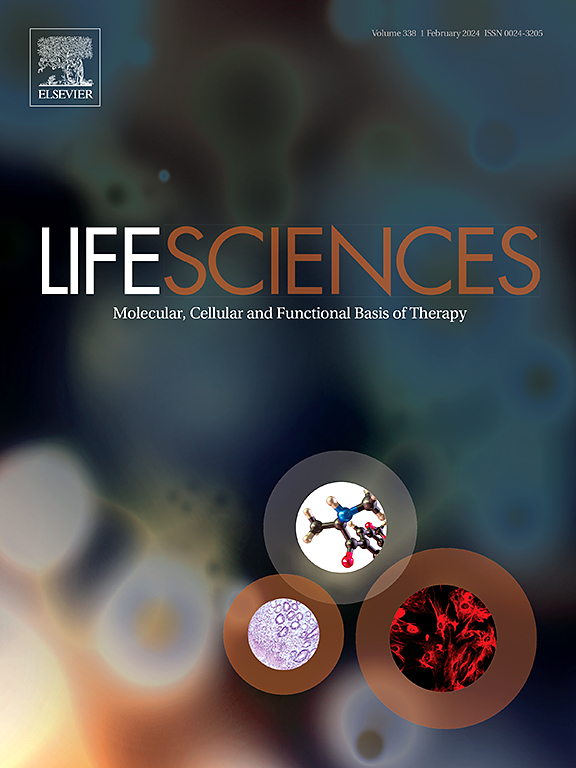Proteomic insights into metabolic dysfunction-associated steatotic disease: Identifying therapeutic targets and assessing on-target side effects
IF 5.2
2区 医学
Q1 MEDICINE, RESEARCH & EXPERIMENTAL
引用次数: 0
Abstract
Aims
The prevalence of metabolic dysfunction-associated steatotic liver disease (MASLD) is rising sharply, yet treatment options remain inadequate. To uncover new therapeutic targets for MASLD, we conducted a comprehensive proteome-wide Mendelian randomization (MR) and phenome-wide association study (PheWAS).
Materials and methods
Discovery MR utilized protein quantitative trait loci (pQTL) data on 4907 plasma protein levels from 35,559 individuals, alongside genome-wide association study (GWAS) on MASLD from the Million Veteran Program (68,725 cases / 95,482 controls). Validation comprised five pairwise combinations of these discovery datasets with three additional datasets: pQTL data for 2923 proteins from the UK Biobank, and liver biopsy-confirmed MASLD GWAS (1483 cases/17,781 controls) and MRI-liver fat GWAS (31,377 subjects) (excluding discovery pair). Candidate proteins underwent druggability assessment and on-target side effect evaluation via PheWAS.
Key findings
We identified 26 proteins associated with MASLD after Bonferroni correction (P < 1.16 × 10-5), with 19 of them showing no significant reverse association. Interleukin-6 (IL-6), alpha-1-antitrypsin (α1-antitrypsin), 5-hydroxytryptamine receptor 7 (5-HT7R), ephrin-B1 (EFNB1), and protein MENT (CA056) were replicated. Notably, IL-6 (OR = 2.02; 95 % CI 1.54-2.64), 5-HT7R (OR = 2.73; 95 % CI 1.96-3.80), and EFNB1 (OR = 1.82; 95 % CI 1.59-2.08) were positively associated with MASLD risk, whereas α1-antitrypsin (OR = 0.84; 95 % CI 0.78-0.90) and CA056 (OR = 0.90; 95 % CI 0.86-0.94) appeared protective. Among these, IL-6, 5-HT7R, and α1-antitrypsin were druggable. PheWAS identified potential cardiovascular side effects for 5-HT7R and α1-antitrypsin.
Significance
The integrative study identified several plasma proteins associated with MASLD. IL-6, α1-antitrypsin, 5-HT7R, EFNB1 and CA056 deserve further investigation as potential drug targets for MASLD.

代谢功能障碍相关脂肪变性疾病的蛋白质组学研究:确定治疗靶点和评估靶侧副作用
目的:代谢功能障碍相关脂肪变性肝病(MASLD)的患病率正在急剧上升,但治疗方案仍然不足。为了发现MASLD的新治疗靶点,我们进行了一项全面的全蛋白质组孟德尔随机化(MR)和全现象关联研究(PheWAS)。材料和方法discovery MR利用来自35,559个人的4907个血浆蛋白水平的蛋白质数量性状位点(pQTL)数据,以及来自百万退伍军人计划(68,725例/ 95,482例对照)的MASLD全基因组关联研究(GWAS)。验证包括这些发现数据集的5个两两组合,另外还有3个数据集:来自UK Biobank的2923个蛋白质的pQTL数据,肝活检证实的MASLD GWAS(1483例/17,781例对照)和mri肝脂肪GWAS(31,377例受试者)(不包括发现对)。候选蛋白通过PheWAS进行药物性评估和靶侧副作用评估。通过Bonferroni校正,我们鉴定出26个与MASLD相关的蛋白(P <;1.16 × 10-5),其中19个无显著负相关。复制白细胞介素-6 (IL-6)、α -1-抗胰蛋白酶(α -1-抗胰蛋白酶)、5-羟色胺受体7 (5-HT7R)、ephrin-B1 (EFNB1)和蛋白MENT (CA056)。值得注意的是,IL-6 (OR = 2.02;95% ci 1.54-2.64), 5-ht7r (or = 2.73;95% CI 1.96-3.80)和EFNB1 (OR = 1.82;95% CI 1.59-2.08)与MASLD风险呈正相关,而α1-抗胰蛋白酶(OR = 0.84;95% CI 0.78-0.90)和CA056 (OR = 0.90;95% CI 0.86-0.94)具有保护作用。其中IL-6、5-HT7R、α - 1抗胰蛋白酶可用药。PheWAS发现了5-HT7R和α1-抗胰蛋白酶的潜在心血管副作用。意义:这项综合研究发现了几种与MASLD相关的血浆蛋白。IL-6、α1-抗胰蛋白酶、5-HT7R、EFNB1和CA056作为MASLD的潜在药物靶点值得进一步研究。
本文章由计算机程序翻译,如有差异,请以英文原文为准。
求助全文
约1分钟内获得全文
求助全文
来源期刊

Life sciences
医学-药学
CiteScore
12.20
自引率
1.60%
发文量
841
审稿时长
6 months
期刊介绍:
Life Sciences is an international journal publishing articles that emphasize the molecular, cellular, and functional basis of therapy. The journal emphasizes the understanding of mechanism that is relevant to all aspects of human disease and translation to patients. All articles are rigorously reviewed.
The Journal favors publication of full-length papers where modern scientific technologies are used to explain molecular, cellular and physiological mechanisms. Articles that merely report observations are rarely accepted. Recommendations from the Declaration of Helsinki or NIH guidelines for care and use of laboratory animals must be adhered to. Articles should be written at a level accessible to readers who are non-specialists in the topic of the article themselves, but who are interested in the research. The Journal welcomes reviews on topics of wide interest to investigators in the life sciences. We particularly encourage submission of brief, focused reviews containing high-quality artwork and require the use of mechanistic summary diagrams.
 求助内容:
求助内容: 应助结果提醒方式:
应助结果提醒方式:


